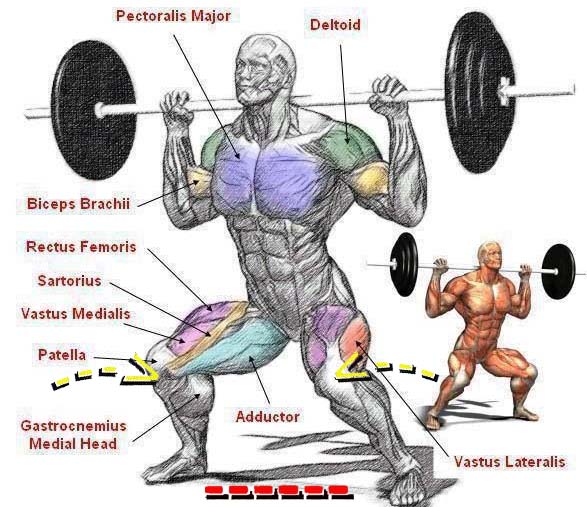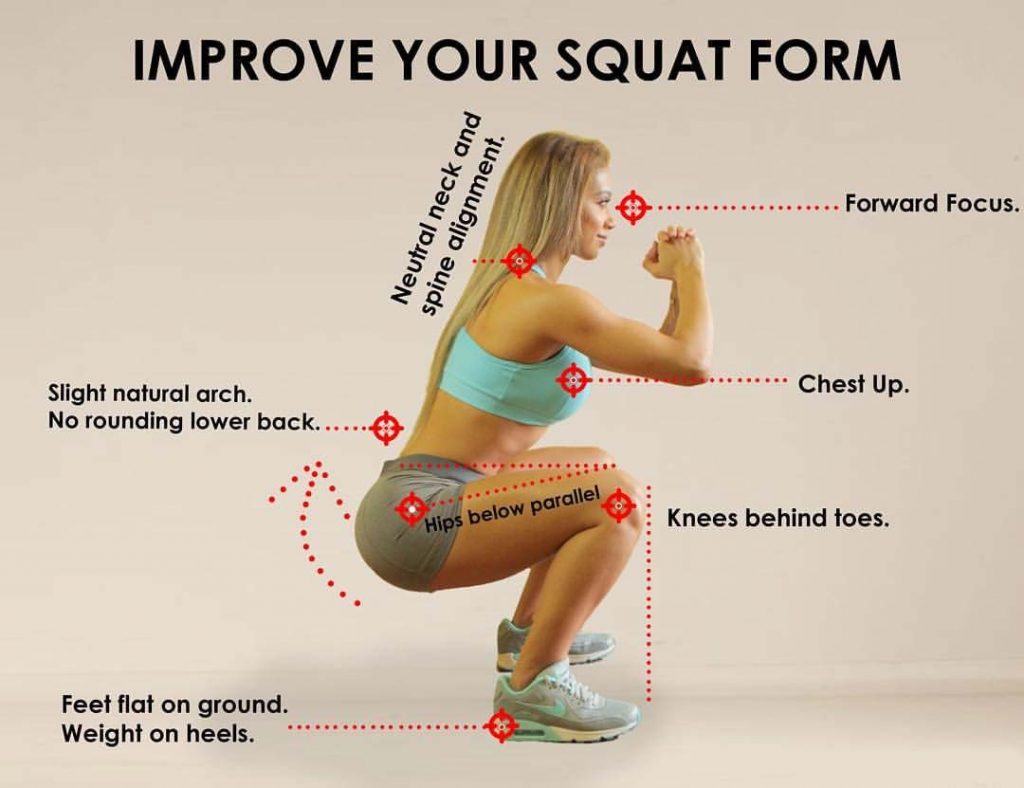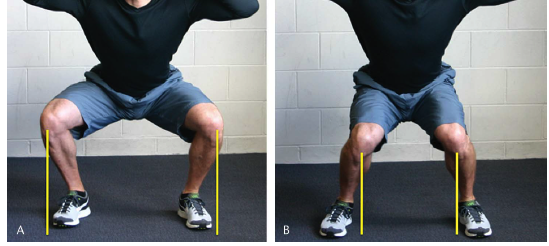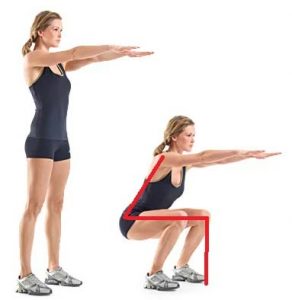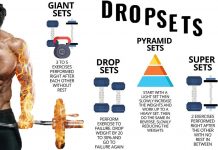The position of the legs and knees when squats
Incorrect squats, especially with loose weights, are very harmful to the spine and knees. we will tell you how to independently checking the squat technique, to reveal common mistakes and ways to fix them.
You cannot perform the squat exercise correctly until your body is ready for it. For example, if you have restrictions on the mobility of the hip joint, then you simply physically cannot perform the squat correctly. And even more so, do not try to squat with weight: this can adversely affect the health of the knee joints and spine.
Therefore, before doing weighted squats, check to see if you can do them correctly.
Self-checking deep squat technique
Starting position: feet shoulder width apart, slightly turn your hips outward.
Test: sit down so that your hips are parallel to the floor, keeping your back straight. Stop and then return to starting position.
Criteria for verification:
- Squat should be performed smoothly, without jerking;
- Keep your back straight throughout the exercise;
- The knees are directly above the feet;
- Do not lose balance;
- The feet are fully pressed to the floor throughout the exercise;
- Keep your head in neutral.
To assess performance by all criteria, squat in front of the mirror: first facing it, and then sideways.
You can also ask a friend to follow your movements. It can be difficult to assess the position of the body itself, and in addition, we often lack self-criticism.
The main mistakes when doing squats
Let’s analyze four common mistakes in the squatting technique and help to fix them.
Mistake # 1. Knees Wrap Inward
This is a common mistake, which is especially common when working with free weights. The reason for this error lies in the weak muscles that take away the thigh, and the muscles that rotate the thigh.
How to fix squat
To strengthen these muscles and restore the correct technical squat, do exercises with a rubber band-expander. You can also breed your knees at the bottom. Perform a squat, slightly loosen the control, allowing the band-expander to curl your knees inward, and then spread your legs to the correct position of the knees. Repeat several times and then return to the starting position.
Read also the article: How to do Sumo squat
Mistake number 2. Squat is not deep enough
If you cannot crouch below, so that your hips are parallel to the floor, then you do not have enough mobility for the hip joint. In other words, stiff muscles limit the range of motion.
Your task is to relax and stretch the muscles that do not allow you to crouch deep enough: hip biceps and buttock muscles. Stretch and before moving on to free weights, try squatting with your own weight near the mirror.





































